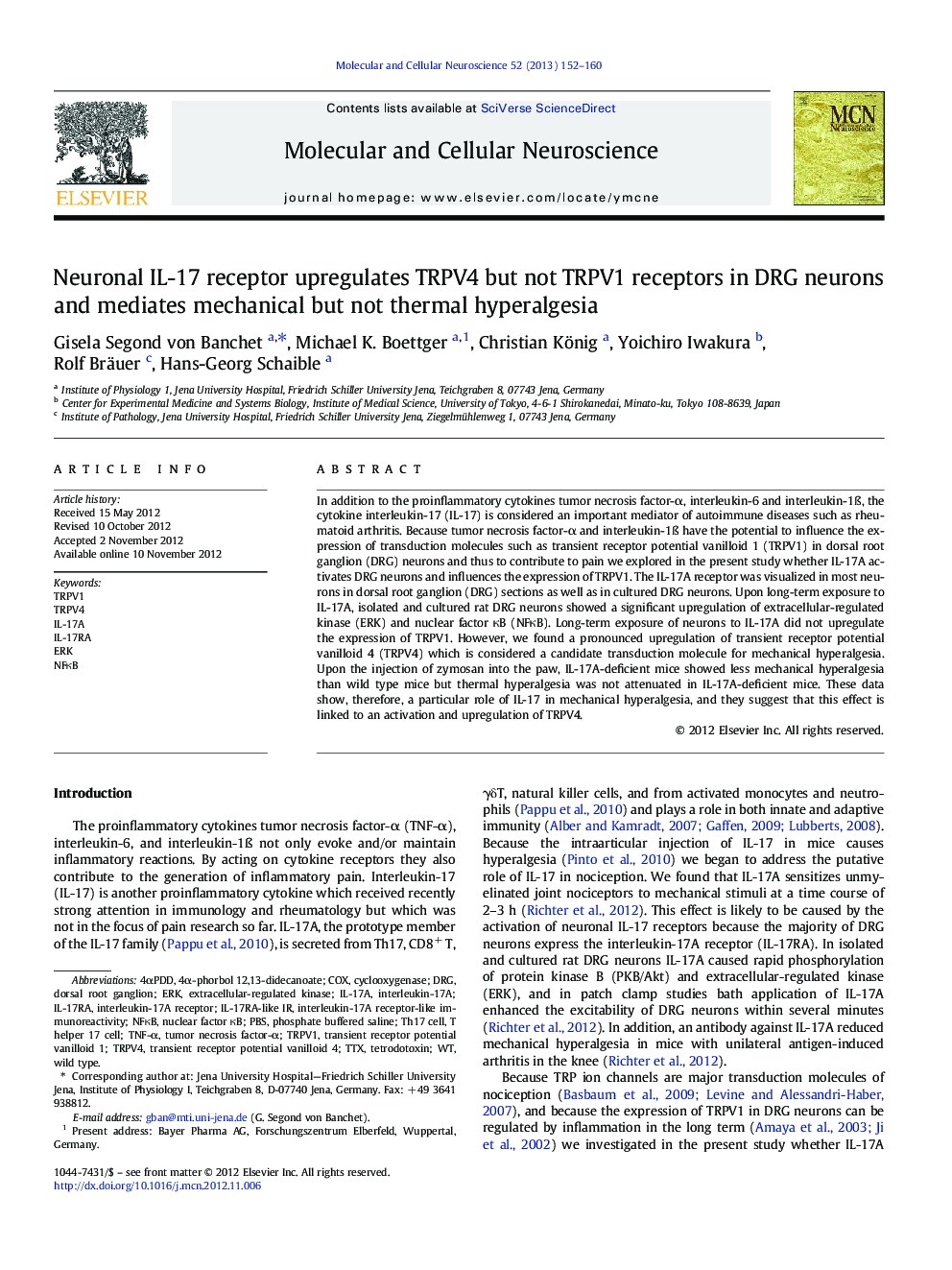| Article ID | Journal | Published Year | Pages | File Type |
|---|---|---|---|---|
| 2198579 | Molecular and Cellular Neuroscience | 2013 | 9 Pages |
In addition to the proinflammatory cytokines tumor necrosis factor-α, interleukin-6 and interleukin-1ß, the cytokine interleukin-17 (IL-17) is considered an important mediator of autoimmune diseases such as rheumatoid arthritis. Because tumor necrosis factor-α and interleukin-1ß have the potential to influence the expression of transduction molecules such as transient receptor potential vanilloid 1 (TRPV1) in dorsal root ganglion (DRG) neurons and thus to contribute to pain we explored in the present study whether IL-17A activates DRG neurons and influences the expression of TRPV1. The IL-17A receptor was visualized in most neurons in dorsal root ganglion (DRG) sections as well as in cultured DRG neurons. Upon long-term exposure to IL-17A, isolated and cultured rat DRG neurons showed a significant upregulation of extracellular-regulated kinase (ERK) and nuclear factor κB (NFκB). Long-term exposure of neurons to IL-17A did not upregulate the expression of TRPV1. However, we found a pronounced upregulation of transient receptor potential vanilloid 4 (TRPV4) which is considered a candidate transduction molecule for mechanical hyperalgesia. Upon the injection of zymosan into the paw, IL-17A-deficient mice showed less mechanical hyperalgesia than wild type mice but thermal hyperalgesia was not attenuated in IL-17A-deficient mice. These data show, therefore, a particular role of IL-17 in mechanical hyperalgesia, and they suggest that this effect is linked to an activation and upregulation of TRPV4.
